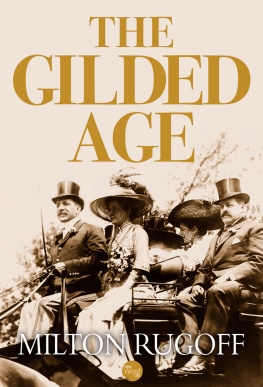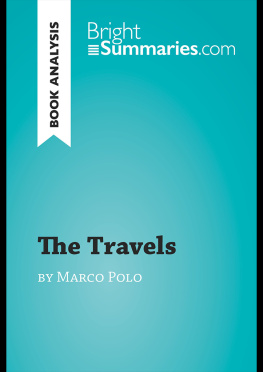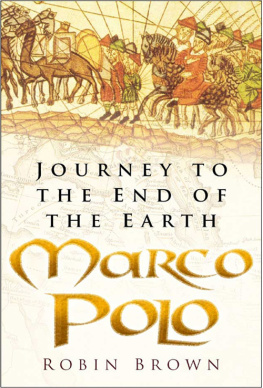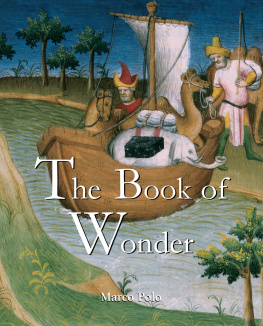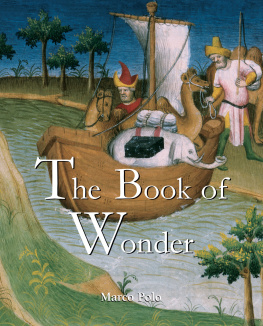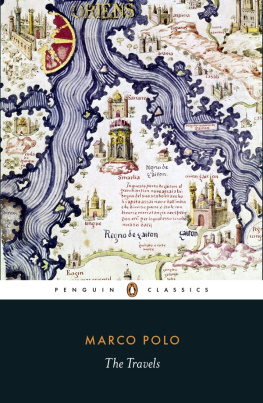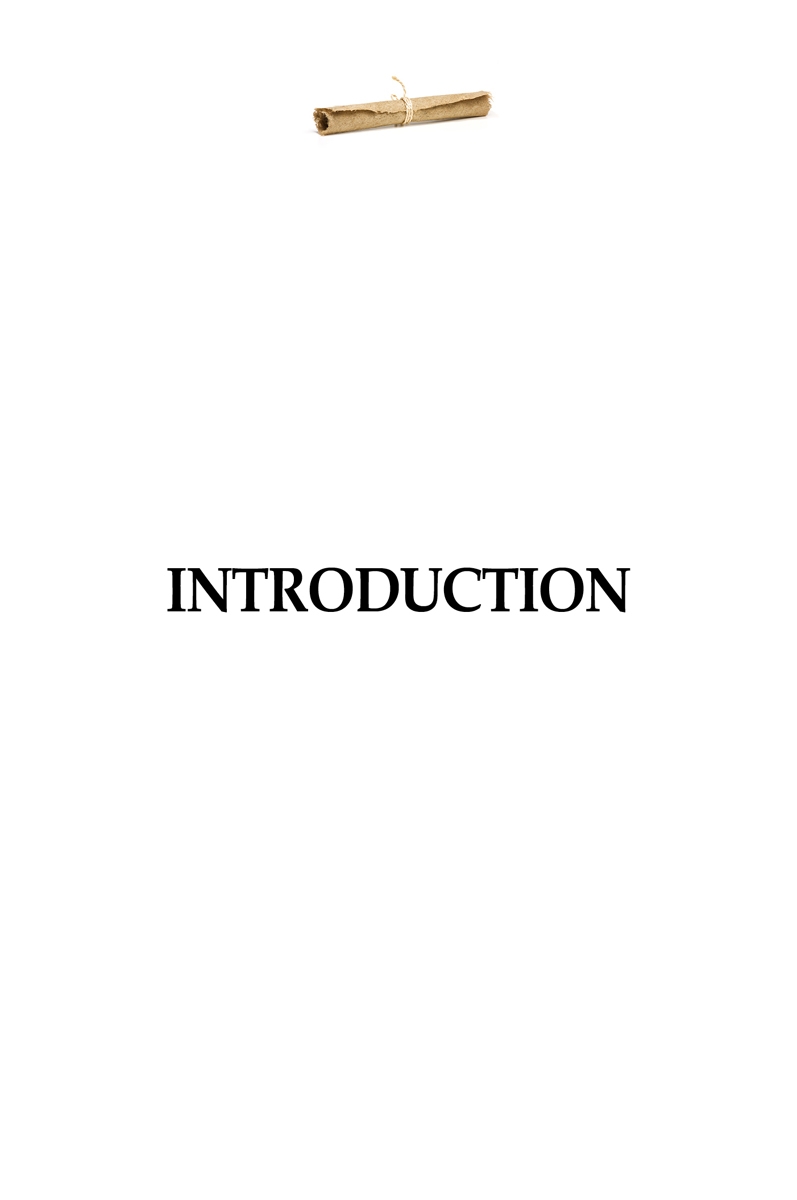Day after day during 1297 and 1298, an odd performance took place in the jail in Genoa. There, a sturdy man in his early forties told of his travels while another copied down his words. His stories captivated other prisoners and his jailers, and leading citizens of Genoa sometimes came to listen, too.
He explained how he had traveled for almost twenty-five years and thousands of miles to the east. He described the gold and silver pagodas of Burma, the shark-charmers who protected the pearl divers of Ceylon, and the cannibals of Sumatra. Most astonishing were his stories of the country farthest to the east: Cathay. He said it was the greatest and wealthiest empire the world had ever known with the most powerful ruler in history.
At first, his amazed listeners didnt believe him. But the facts, figures, and countless details shared by the traveler overwhelmed the listeners and made them believers. They thought that his story would be the most marvelous ever published.
And so it was. The man was Marco Polo, a merchant of Venice, and the book he dictated was Il Milione, or as it came to be known in English, The Travels of Marco Polo. He was a prisoner for nearly three years, having been captured commanding a galley in a battle between the Genoese and Venetians, probably in 1298.
When the cities declared a truce in 1299, authorities released Marco Polo and he went home, bearing the manuscript that recounted the journey he had made with his father and uncle to the court of Kublai Khan between 1271 and 1295. But the people who had disputed his stories when he returned to Italy were still reluctant to believe him. Even after they began to copy and widely distribute his manuscript across Europe, most readers regarded Marco as a teller of tall tales. How could anyone believe stories of a city so large that it had 12,000 bridges, of black stones and a liquid that burned, of a kind of pony express with 10,000 stations and 300,000 horses, and of a land to the north where it was night all winter and day all summer?
Only a handful of people paid attention at first, but that group included explorers, geographers, and mapmakers, who took note of Marcos detailed descriptions of people and places. Many years later, when the invention of the printing press spread the book across Europe in the fifteenth century, Marcos stories spurred peoples hopes and fed their dreams. Ordinary readers were thrilled by his stories of the gold and spices he had seen in the cities of the East.
A sea captain from Genoa named Christopher Columbus dreamed he might reach the lands of spices and gold by sailing west. Columbus had read Marcos Travels. In fact, he made notes on seventy pages of a Latin edition of the book, which is now in Seville, Spain. The Travels of Marco Polo stimulated Columbuss ambitions and imagination. In 1474, the Italian geographer Paolo dal Pozzo Toscanelli sent a map to Columbus to study. Toscanelli was the astronomer and mathematician who had determined the locations of Zipangu (Japan) and the Indies based on Marco Polos descriptions.
A few other thoughtful men began to realize that Marco had brought from Asia something more valuable than gold and spices. For Europe, knowledge about other civilizations was more important than the discovery of gold and spices. While later explorers such as Columbus and James Cook touched the coasts of unknown lands, Marco Polo described an entire continent.
He brought back a wealth of information - not only regarding mountains and deserts, goods, crafts, and inventions, but also governments, religions, and customs. He described the Hindu Brahmins, Chinese, Buddhists, and an emperor, Kublai Khan, who tolerated all religions.
Marco Polos journey changed Europe. After Marcos account of his voyage, no well-read European could believe that his culture led the world. Marco had demonstrated that much of the vast outside world overflowed with both ideas and wealth.
China in the thirteenth century was richer and more civilized than Europe. Paradoxically, though, the reason Marco could journey overland to China and view its treasures was that the Chinese were no longer able to keep him out, as they would have done earlier and later. At that time, Mongol warriors ruled Asia. Although most people thought the Mongols were ruthless killers of their Christian enemies, the Mongols actually were quite tolerant of foreigners and most religions. Kublai Khan himself was intensely curious about the West and regarded Marco Polos uncle and father as his personal envoys to the pope.
Khan hoped that the Polo party would promote world peace - or at least more vigorous trade. For a time, trade did flourish, but then a wholly different result came to pass. Because of his book, Marco made people curious about new countries, people, and ideas. His manuscript lit the way to that great rebirth of interest in the world and sparked the Renaissance.
Marcos book is filled with vivid writing and evocative detail: The multitude of tigers makes traveling dangerous unless a number of persons go in company. Many come here to have their bodies ornamented by puncturing with needles... the annual revenue to His Majesty amounted to 16,800,000 ducats. John Man, one of Marcos biographers, noted that the story was also a real-life fairy tale, in which a father plucked an ordinary teenager from his home and took him on an adventure. In a civilization of unimaginable splendor, the richest and most powerful man in the world became his mentor and sent him off on missions across the empire. When the writer returned home as a man of wealth and power, few believed his tales. But in the end, his book brought him fame, respect, and a place in history.
The book also left many unanswered questions. The original manuscript was lost, and the 134 copies that survived have many discrepancies. Marco was a merchant, not a scholar; he was more interested in facts and finery than in ideas or innovations that didnt involve commerce or warfare. For example, he had no interest in the importance of the Chinese invention of printing. While the descriptions of the lands, people, and customs he saw are rich with detail, he shared little about his own life during his twenty-four-year journey, or how he and his fellow travelers felt as they faced starvation, freezing temperatures, and other dire circumstances. But those gaps allow readers to fill in the story with conjectures and speculations that make the tale even more intriguing. That is the power of the book.
Here is Marco Polos story.
The Venice in which Marco Polo grew up was a place to stir the blood and excite a hundred dreams in the mind of a boy. As late as A.D. 500, it had been only a cluster of marshy islands huddling in a lagoon on the northern shore of the Adriatic Sea, occupied mainly by hardy fishermen and their families. But by the year of Marcos birth, 1254, Venice had become Queen of the Adriatic - an enchanted, canal-laced city floating magically on the sea, the heart of the greatest mercantile empire Europe had ever seen.
To its crowded wharves from dawn to dusk came sailing ships loaded with gold, ivory, spices, and slaves from far-off places. Along its network of canals - some barely a dozen feet wide, others broad as rivers - fleets of bright gondolas glided. Over the arcs of its hundreds of bridges and through its many squares passed people from every country of Europe and from Asia Minor and North Africa. Dressed in colorful clothes and conversing in unfamiliar tongues, they brought with them an aura of mysterious and exciting places.


